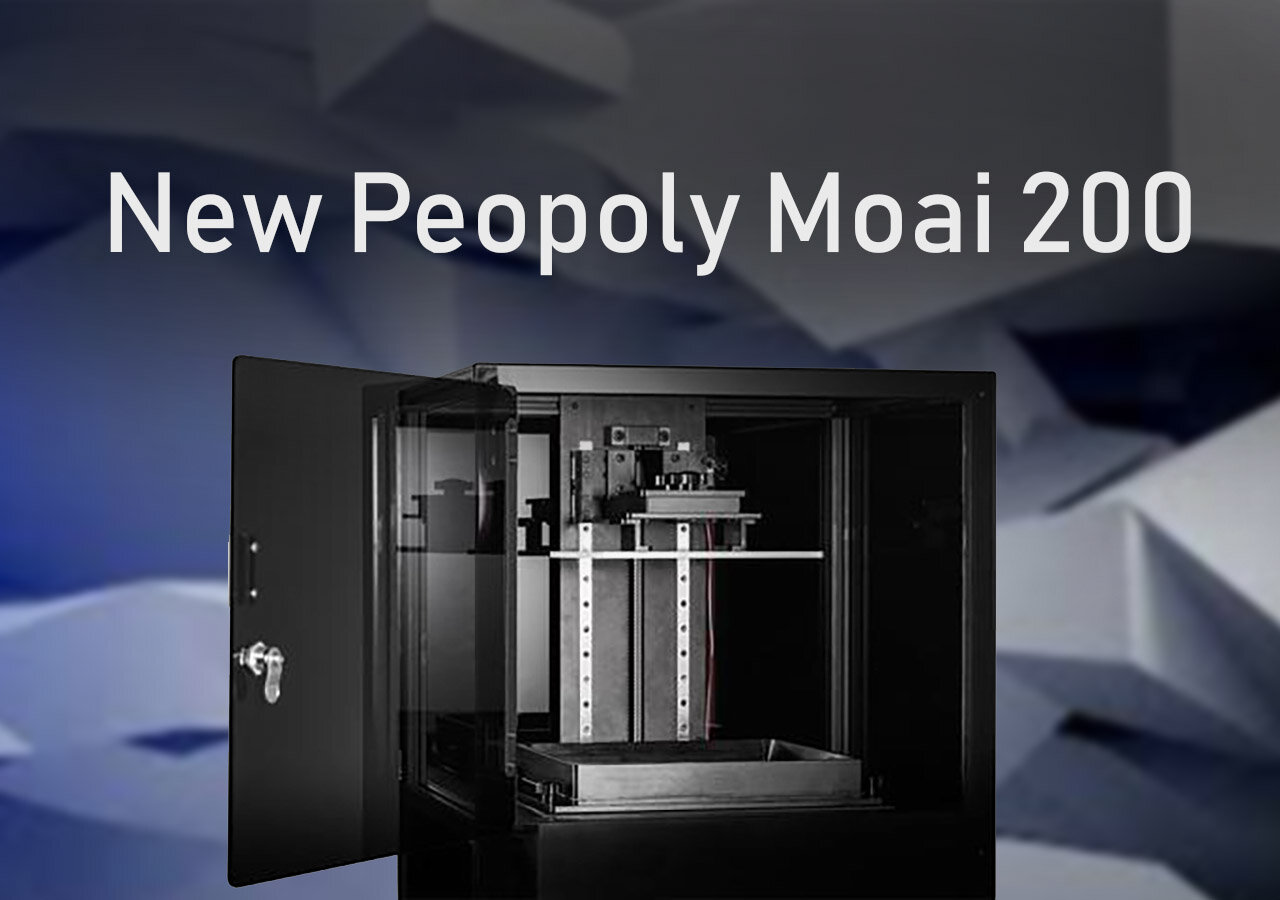Peopoly Moai 200
The new Peopoly Moai 200 just released! It’s the next version of Moai I’ve fallen in love with and this beefed up version with even more build volume seems to be even better!
If you’re looking into getting a SLA 3D Printer with exceptional printing in high details and quality, the Peopoly Moai is already one of the best options out there. It’s affordable, easy to use, compatible with almost all resins (405nm) and just a blast to work with.
I’ve assembled my kit myself and it worked without a glitch since the start. The Peopoly Moai 200 builds upon this awesome SLA 3D Printer and promises larger build volume without compromises.
New features and specs
The new Peopoly Moai 200 have a few interesting specs that impresses:
Print Volume: 205 x 205 x 250 mm
Laser: 210mW 405nm solid state laser
Laser Spot size: 70um
Galvo: 40Kpbbs
Vat: FEP film based Vat
Software: Peopoly Asura
The main difference here from the previous version is the build size. We’re looking at 205x205x250 compared to 130x130x180mm. A size difference that really helps productivity.
We also see a new software, Peopoly Asura, which was released for the original Moai during the summer of 2018. It’s still in the works, but allows for a great one-stop solution for both SLA-supports and settings, instead of using Cura, which seems to be more optimized for FDM-printers.
Things the Peopoly Moai 200 will allow
Bigger volume allows for more complex parts and longer jobs to be created. Most people might just be interested in single models at a larger size, but I think the ability to place several parts next to each other is great!
For many of my projects, the Moai size works great. I can arrange the models in all axis, creating the supports exactly where they’re needed. I sometimes pack a few parts in, like a pair of sunglasses where it’s divided into 3 parts, stacked together.
The problem occurs when you need more parts at a higher output. Although SLA is a bit slower when adding parts in X/Y compared to DLP, it’s superior details are still worth pursuing, but when you add more parts per layer, it’s going to take more time. Read more about SLA, DLP, FDM and more here.
The slowest step in printing is still the changes of layers, but with the Peopoly Moai 200 you might see that layer-separation process takes shorter time than the actual UV-curing of that layer.
The benefit really happens when you’re locked in a print time. So for my glasses, I can only print one pair over night, and one during the day.
With the Moai 200, I should be able to print 2, maybe 3 pairs per print and still have it done in 8-12 hours, meaning I can increase the daily output, which is a huge gain!
The downsides of large resin printers
One of the biggest challenges is keeping the Z-axis stable when separating a larger build plate from it. The Peopoly Moai 200 has solved this by using two linear bearings instead of one on the Z-axis. This might be a bit more tricky to assembly, but should allow to keep the precision during printing.
The other downside as mentioned before is that you’re also probably getting even slower prints since you might have more to cure for each layer.
There’s often a small shrinkage in resins that on the original Moai hasn’t been an issue. I imagine it won’t always be easy getting large “flat” surfaces printed well in the Peopoly Moai 200. Hopefully we’ll have some samples shortly!
What’s next
I can only imagine that development will focus on software now. Peopoly Asura will need a bit more development, and it’s possible that a new version for the Peopoly Moai 200 will be released soon.
Since the Peopoly Moai 200 and original Moai allow changing the laser/printing parameters in the firmware, we’re probably going to see even more resins developed and more databases of settings for a few resins as well.
Finally, adding a heating and/or air filtration system would be helpful for individuals and small business owners. They can’t always use the machine in normal heated/ventilated rooms. Putting the Peopoly Moai in a garage or similar can help with the smell, but risk the resin getting too cold for reliable printing.
Read more!
If you’re curious about the Peopoly Moai 200, you can read more about it here. We’re expecting to see more details and samples released during TCT 2018 and I hope to bring you more info then!
If you’re still looking to get the original Peopoly Moai you can still do it from here (in a kit or assembled)
Want to see some samples from Peopoly Moai? Check out this 3Dbenchy!


